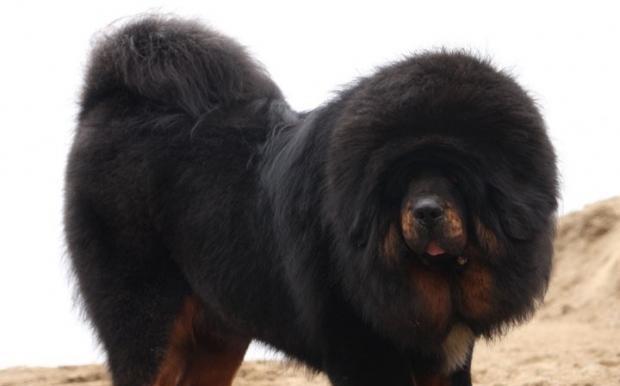The Tibetan mastiff is a unique breed native to the Chinese Qinghai -Tibet Plateau, that is, what we usually call Tibetan mastiff dogs, also known as Tibetan dogs, Fan Dogs, Dragon Dogs, and Dogs. Its tall, fierce, and perpendicular ears are the most recognized and rare dog species that are recognized in the world. The legend of the magic of Tibetan mastiffs in the ancient East has been incarnated by myths to protect the master. His loyalty to protect the Lord is not only the best protection dog of the nomadic people, but also the best guard dog for the king and the tribe head. According to China's interesting folklore, Erlang God's dog is the "four eyes" Tibetan mastiff. The Tibetan mastiff has the reputation of "Oriental Dogs" in the contemporary times. It is a rare and excellent dog species. Now it is domesticated around the world.

Tibetan mastiff (detail introduction)
1. History of Tibetan Mastiff
Tibetan mastiff has thousands of years of history. As the oldest dog breed, it is recorded in the earliest history book "Shang Shu" in China. It can be seen that it was early in the Spring and Autumn Period. This dog has been used as a guard dog. In the records of Chinese historical books, the nomadic nomads (Qiang) at the time (Dai) had domesticated wild dogs that followed herders to deal with other beasts' attacks and threats. They guard the tents, guard the cattle and sheep, and become a loyal partner of the herdsmen. This should be the prototype of the earliest Tibetan mastiff.
Under the extremely harsh living environment of the Qinghai -Tibet Plateau, the Tibetan mastiff has also undergone the natural screening of "things to the sky". In order to leave a stronger variety, the herdsmen choose some of the self -reproduction of individuals who are strong, fierce and loyal, and good at herdsmen, thereby maintaining the pure blood of the Tibetan mastiff. Later, when he was in the Qianlong of the Qing Dynasty, Fu Qing, the Qing government who accompanied the Panchen Master to the eastward, brought a Tibetan mastiff to Beijing, and the upper and lower pose of the god dog was admired. Italian painter Lang Shining draws the last "Cang Cang" in "Ten Dogs" to follow Qianlong's will, which shows this Tibetan mastiff.
However, whether in modern times or modern times, the earliest recognition of its value and promoting it is Westerners. At the beginning of the 18th century, the British first started the cultivation of the Tibetan mastiff and established a blood -type file. In 1947, the first Tibetan mastiff was taken to the United States. In 1973, in order to better protect and understand and breed this endangered dog species, the American Tibetan Mastiff Protection Association began to protect, research and shape the Tibetan mastiff.
2. Tibetan mastiff's signs
Marco Polo once described the Tibetan mastiff in his travel notes. "He is the first Westerner to resort the Tibetan mastiff.
Because of the different life areas, Tibetan Mastiff will also be different in appearance. Usually, the head and neck are high, the expression is mighty, the proportion is appropriate, the muscles are developed, strong like a lion, a larger body, a length of about 120 cm, thick and rich body hair, the outer layer is not too long, the bottom hair is thick, and the cold is cold. The best Tibetan mastiff is out of Naqu area in Tibet. The mane is dense, the front of the chest is wide, the eyes are bright, subtle and deep. The Tibetan mastiff in Qinghai area has almost no mane, the hair on the body is relatively short, but the body shape is larger, but its character is not as fierce and calm in the general Tibetan mastiff.
Three, Tibetan mastiff's character
The real Tibetan mastiff has a kind of king style that is not angry. The harsh living environment of the plateau not only created the powerful willpower of the Tibetan mastiff and the expression of contempt, but also gave the Tibetan mastiff king's temperament. It is lonely, brave, noble, elegant, and loyal, and the character of hunger, cold resistance, and all grinding quality is also the most attractive place. Therefore, the Tibetan mastiff usually protects the territory, protects food, is good at attacking, is fierce, wild is still in a daunting, and has a strong hostility for strangers, but it is extremely affectionate to the owner.
